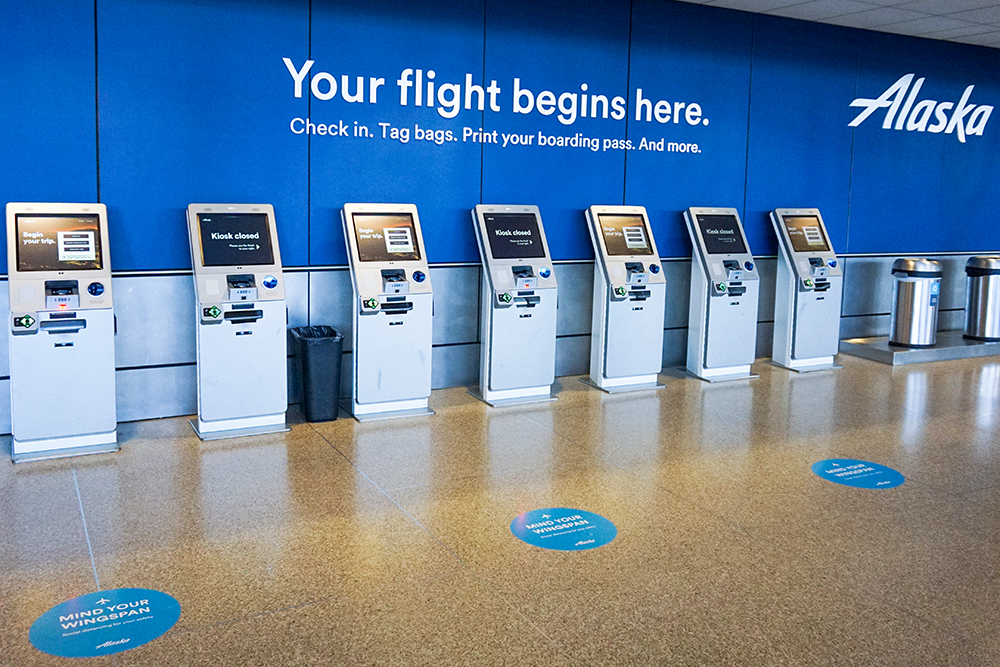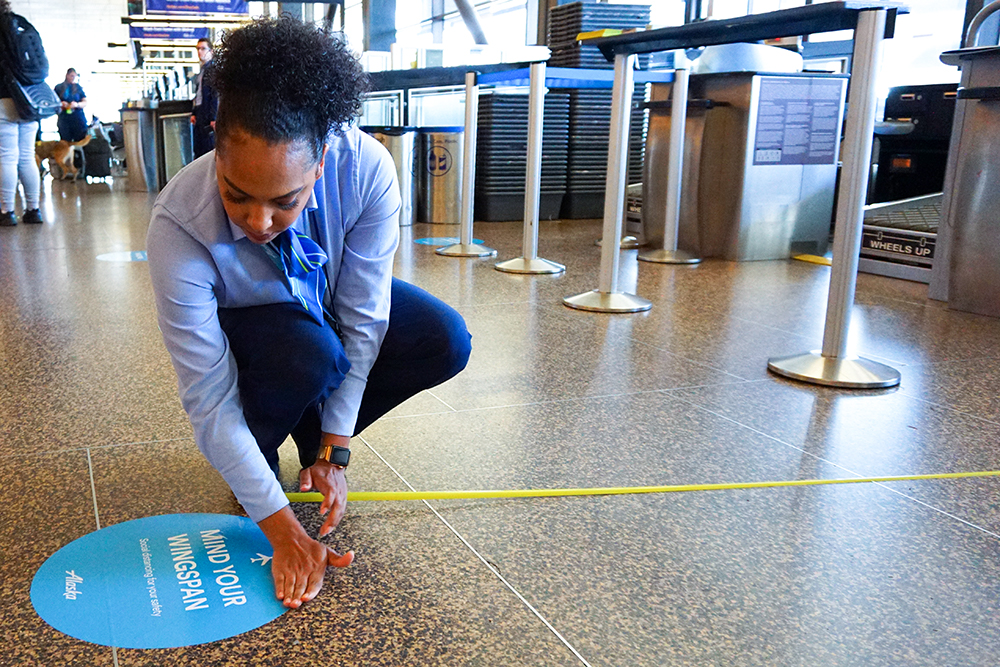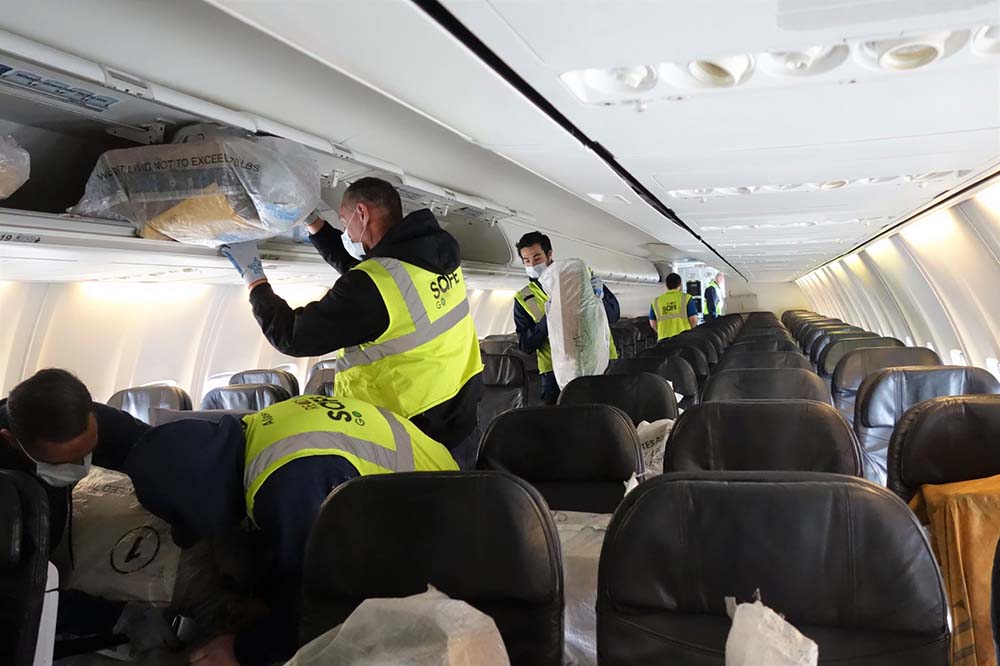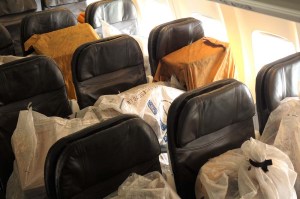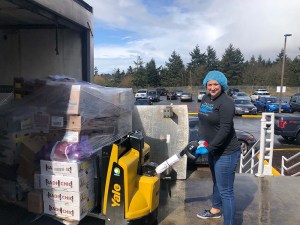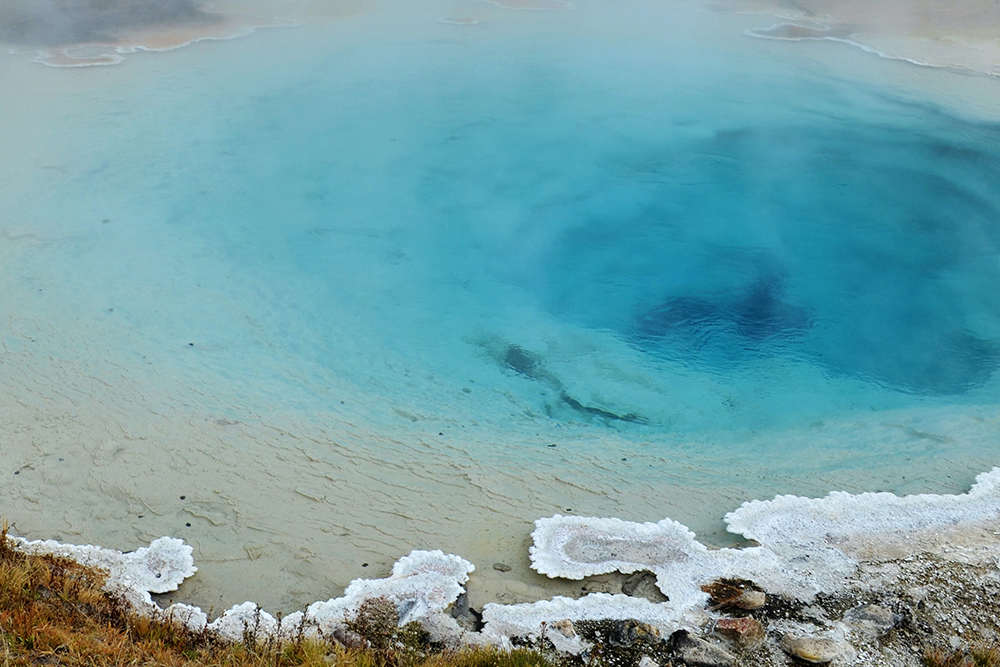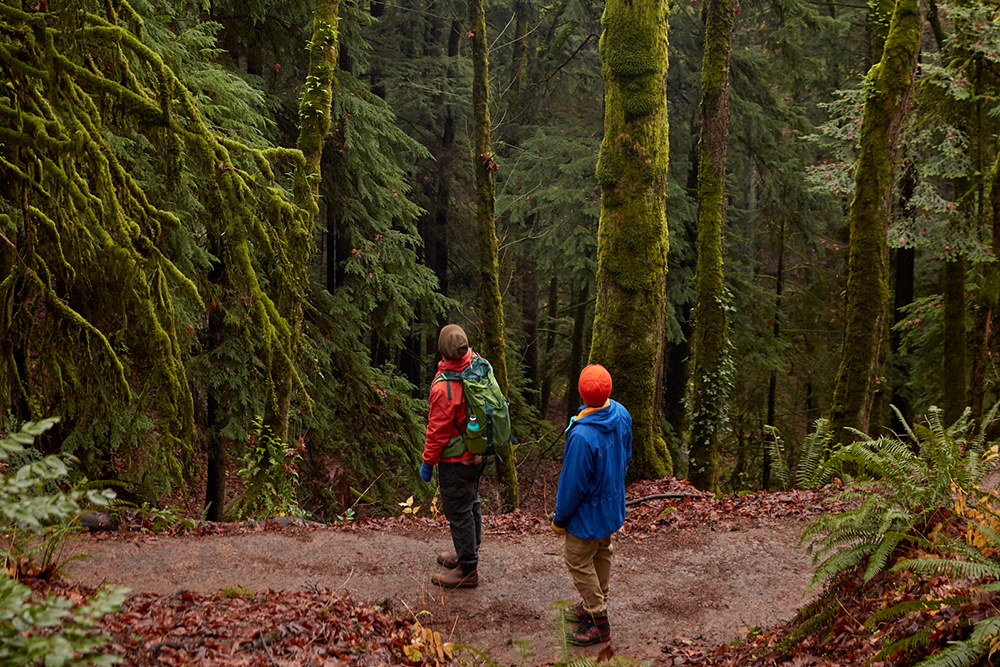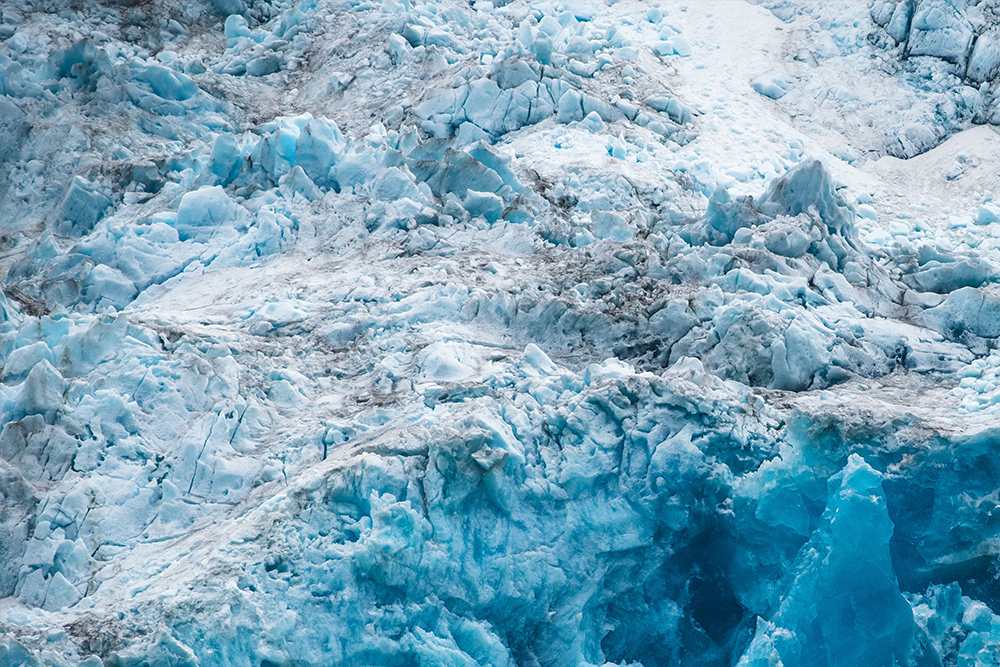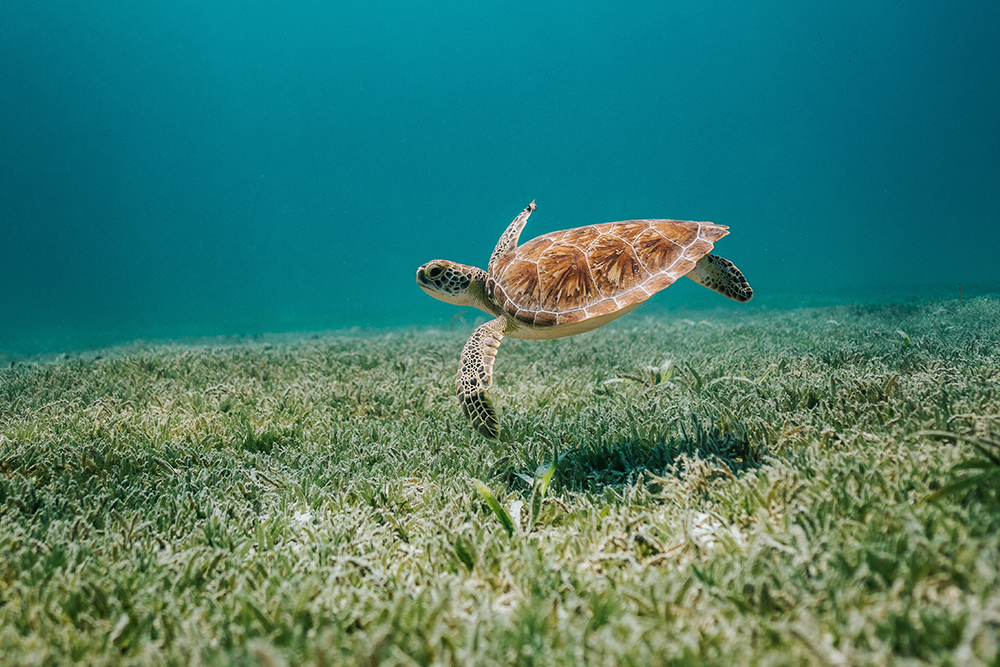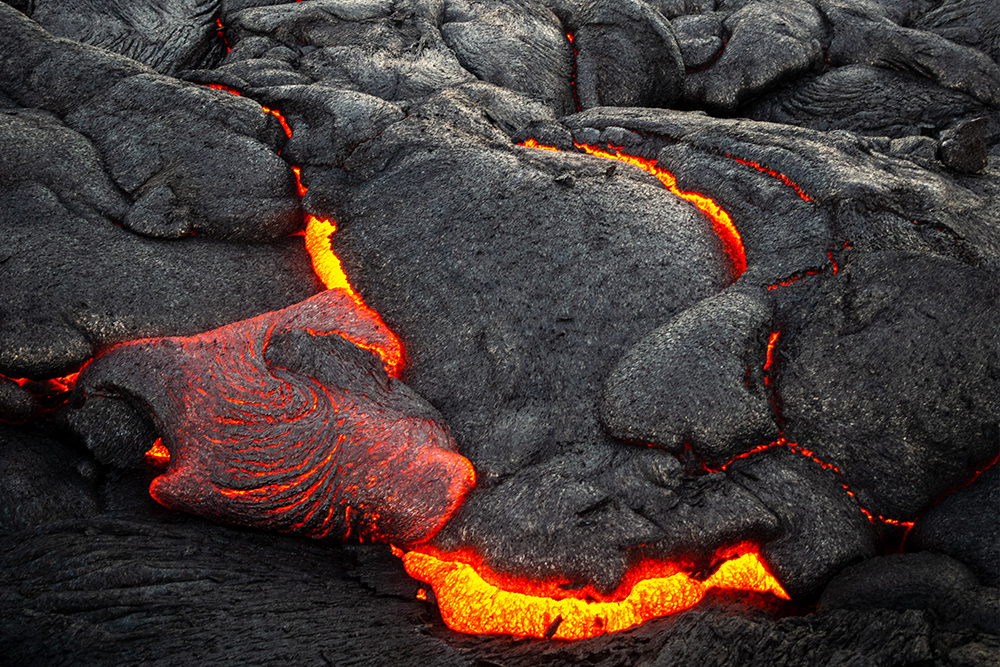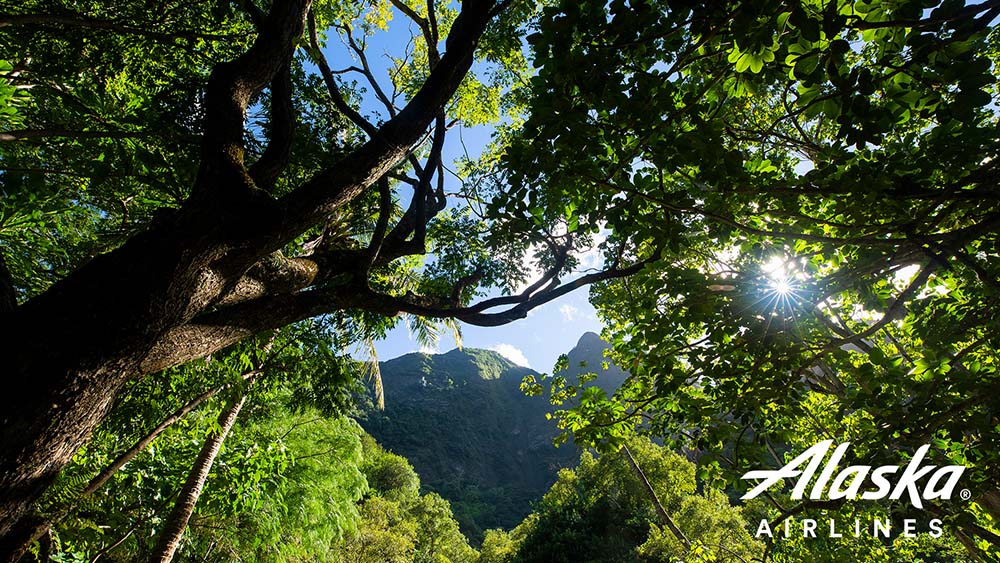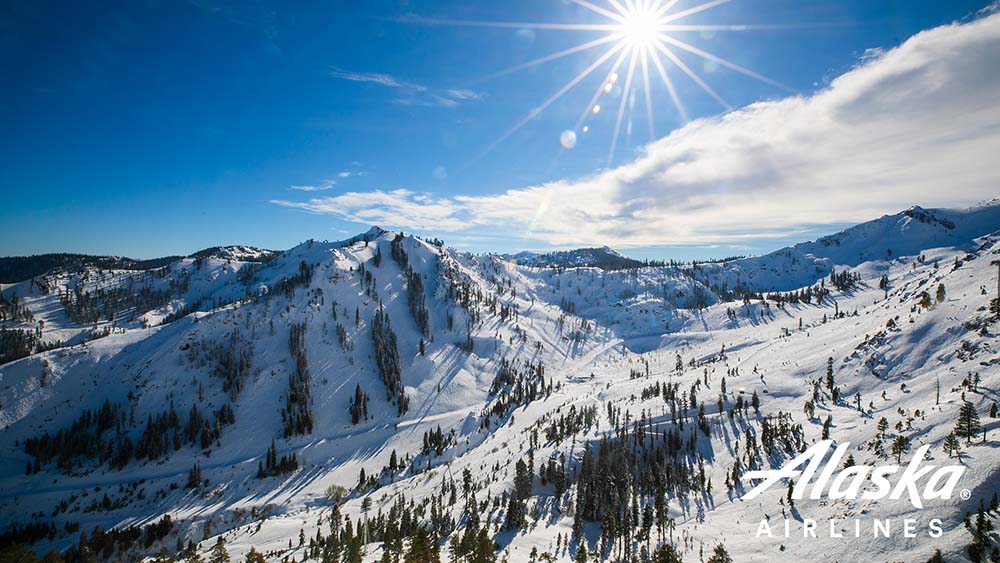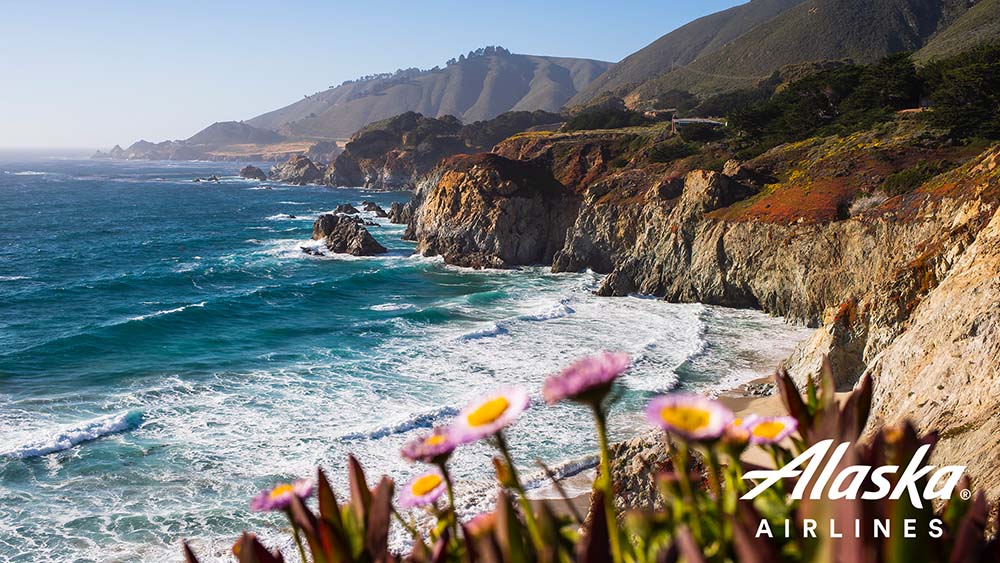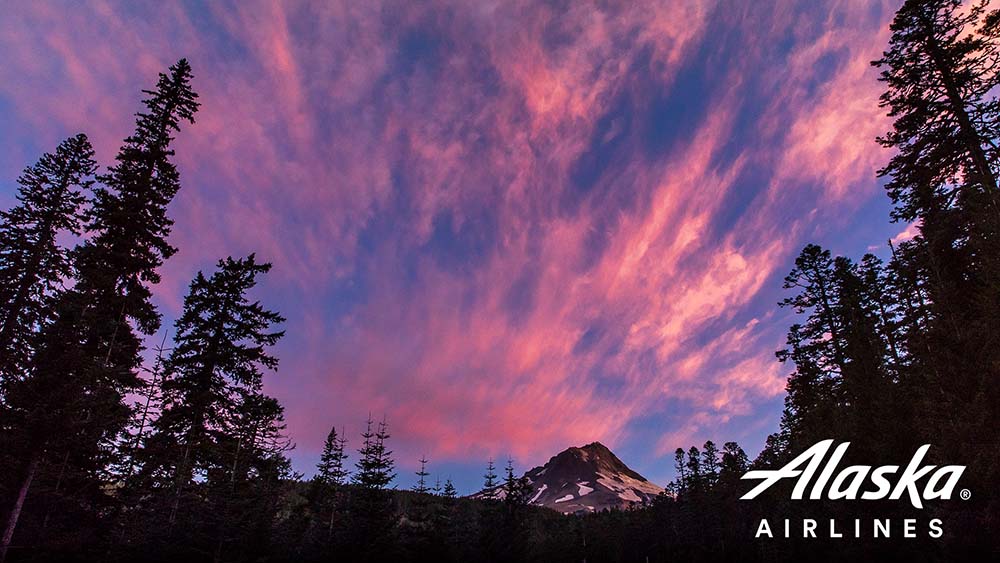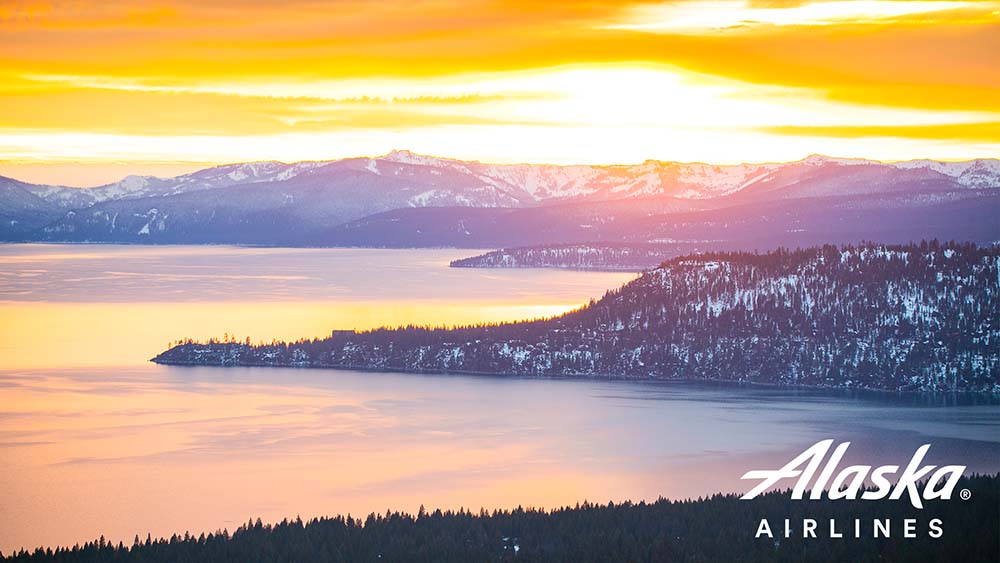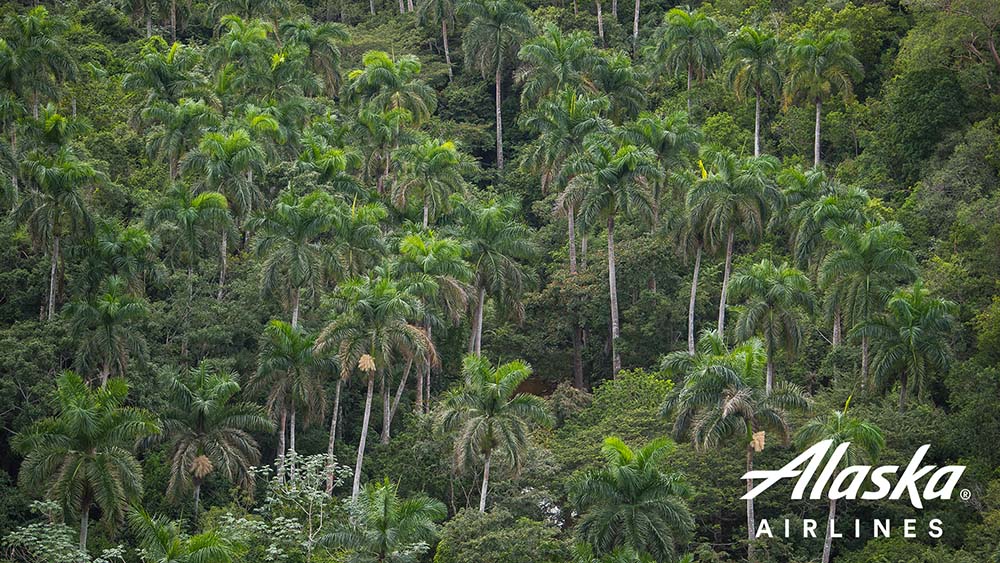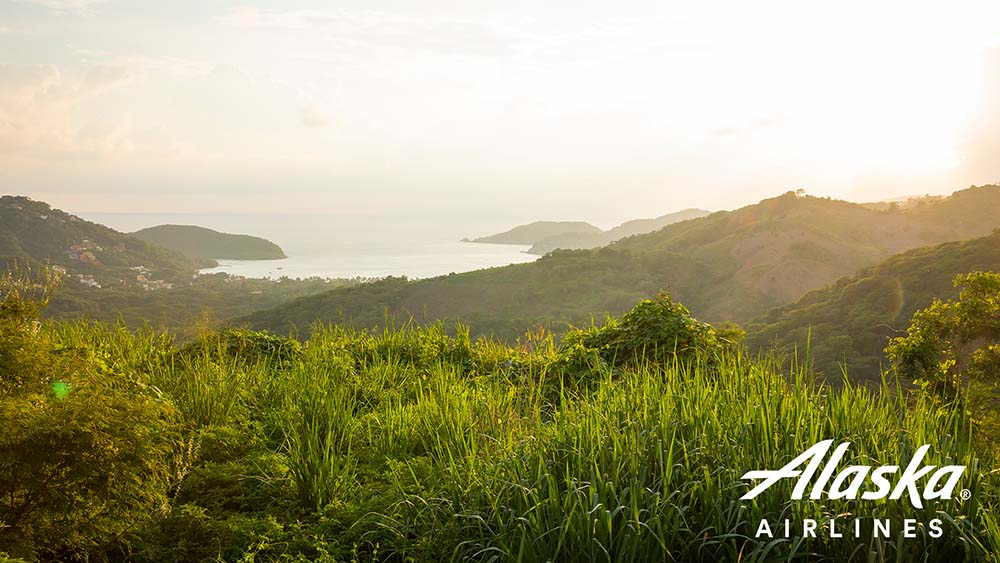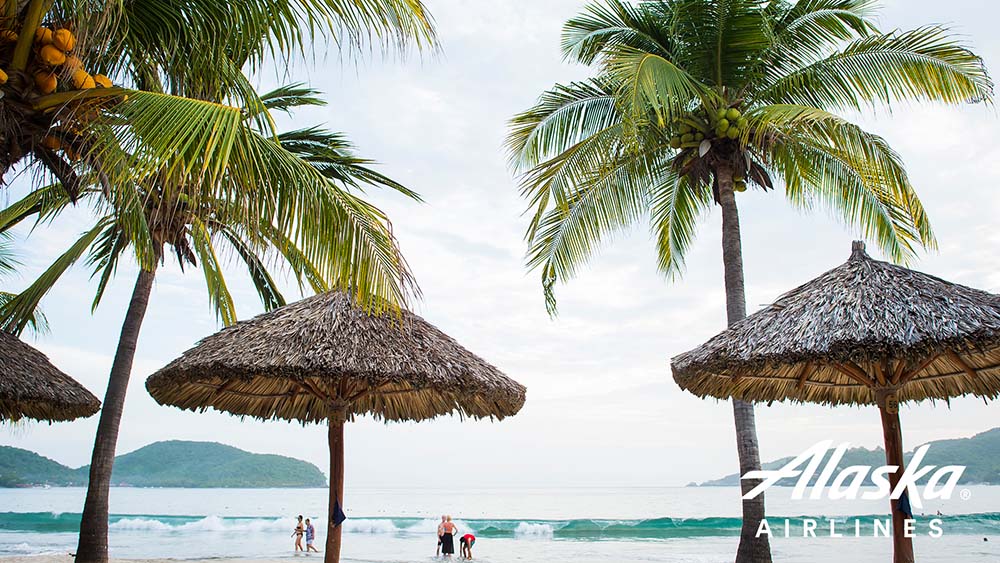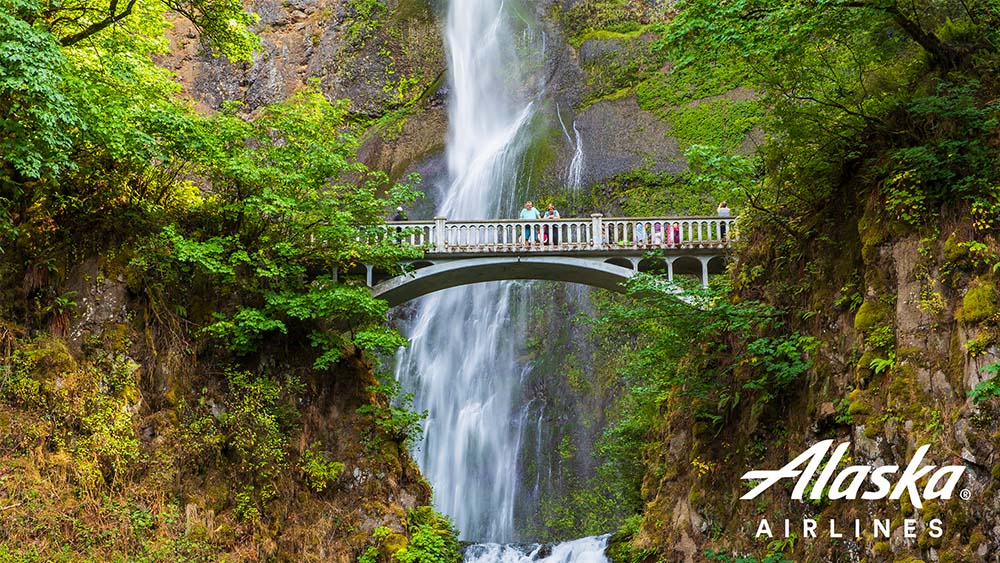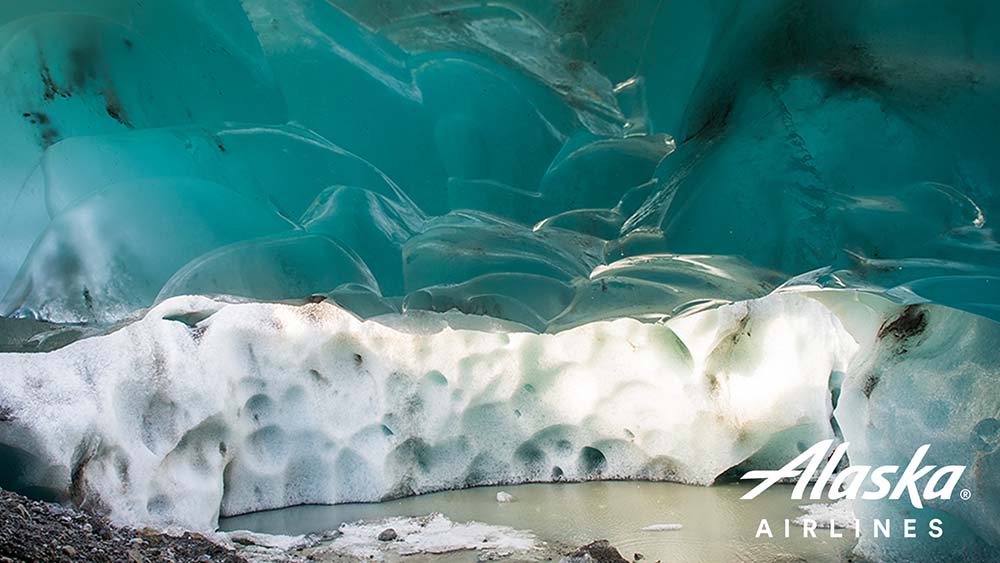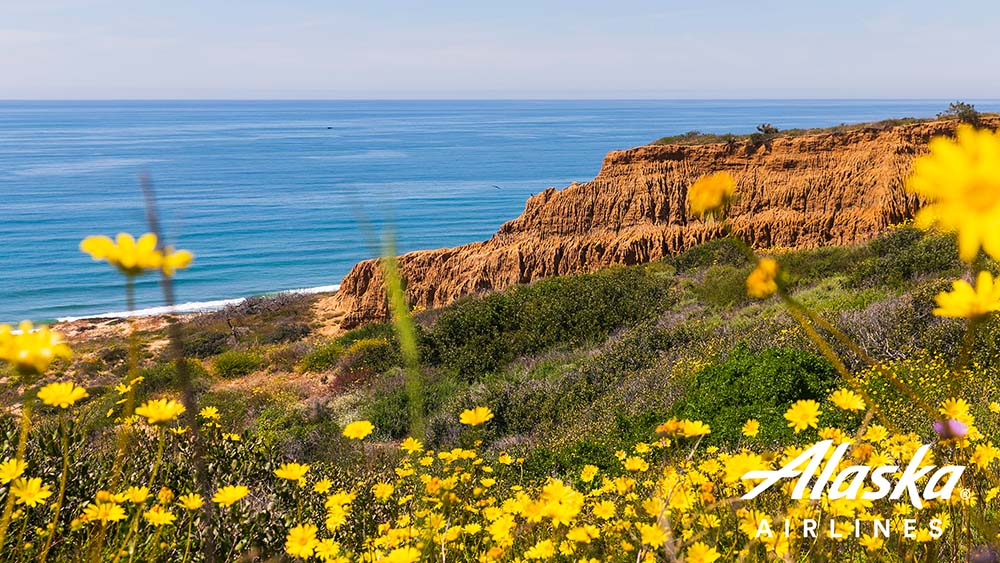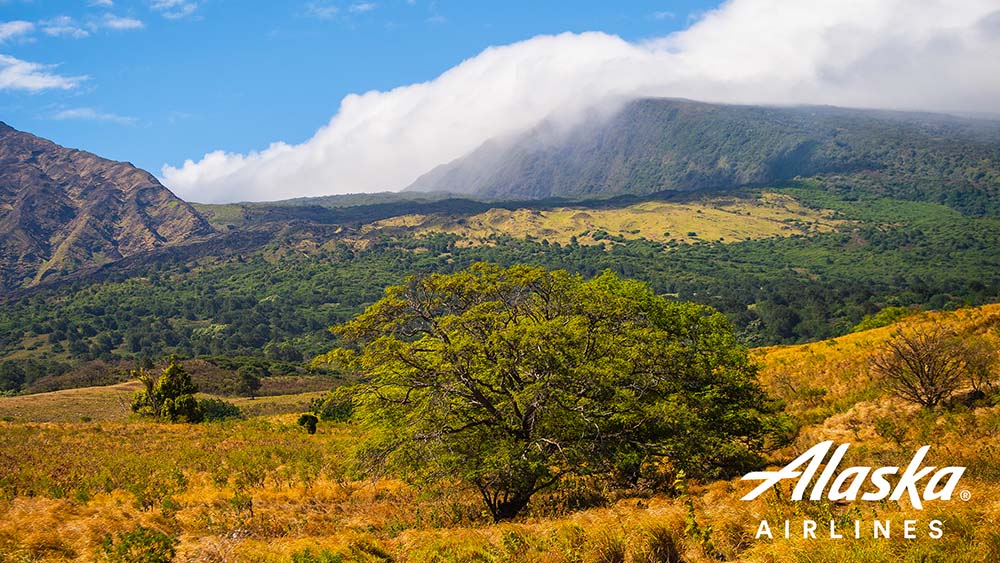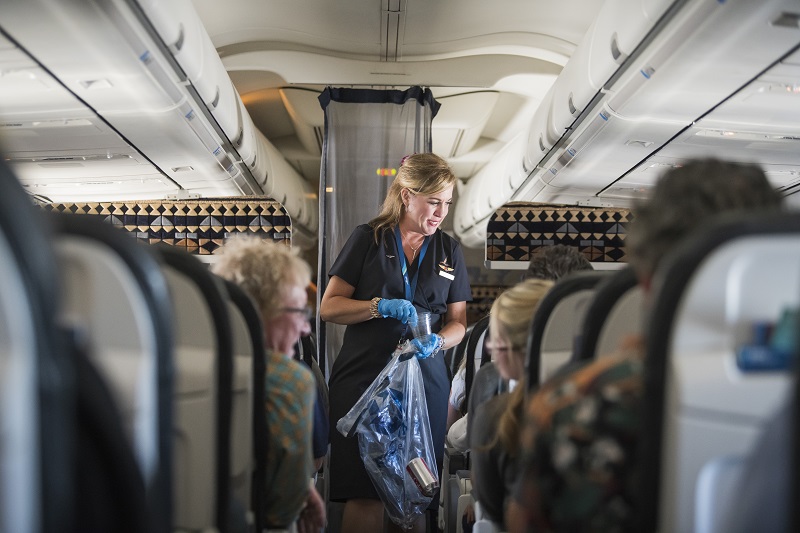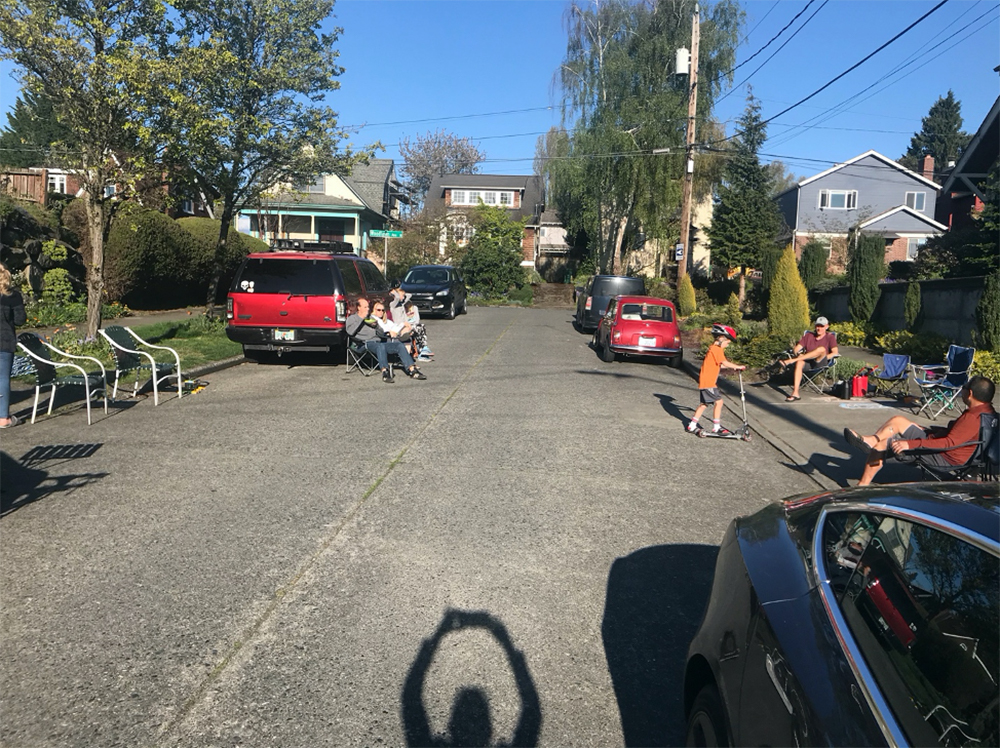Hawai‘i’s vibrant food and art scene, along with its warm culture, help make the Hawaiian Islands a leading global destination. For years, we’ve remained committed to supporting and sharing the talents of our hometown’s chefs, musicians and artists – incorporating their creations in our in-flight amenities, aircraft livery, and employee uniforms, in addition to offering cargo service that helps mom-and-pop shops get their products to the shelves.
We’re constantly partnering with island entrepreneurs and businesses to deliver unparalleled, authentic experiences – not just for our guests, but for the communities we serve right here at home.
However, the COVID-19 pandemic has forced all of us to find creative ways to keep supporting each other, and especially the small local companies that are more vulnerable to a prolonged economic downturn.
Pop-Up Mākeke
The cancellation of the 2020 Merrie Monarch Festival (co-sponsored by Hawaiian Airlines) sent many artisans, designers and retailers scrambling. The world’s most prestigious hula competition also serves as a popular marketplace for small businesses – particularly Native Hawaiian-owned companies – that rely on the weeklong event’s foot traffic in Hilo to showcase their products to attendees from around the world. With a critical revenue stream dried up, leaders at Hawai‘i’s Council for Native Hawaiian Advancement (CNHA) went to the drawing board to find a solution.
The result of their efforts is Pop-Up Mākeke, an online marketplace organized by CNHA to help consumers access Hawai‘i-made products during the pandemic.

Image credit: Pop-Up Mākeke
Participating businesses can feature their products in the digital store at no cost and CNHA staff handle every stage of the order fulfillment. Neighbor Island vendors ship their products to O‘ahu, where they are transported to the Pop-Up Mākeke headquarters on the island’s west side. Orders are processed, packaged and mailed by CNHA’s small staff.
"With all community events and gatherings canceled, our local artisans and businesses needed immediate support to survive the economic impacts of COVID-19. Through our partnerships and community network, we have been able to help dozens of struggling vendors navigate these difficult times," said Kuhio Lewis, chief executive officer of CNHA. "Our online Pop-Up Mākeke has even helped to expand the reach of our microenterprises and allow consumers across the world to patronize our local businesses."
To help offset costs, our Hawaiian Airlines® Bank of Hawaii World Elite Mastercard® has stepped in to cover transportation costs – from air cargo for businesses to ground shipping for customers – of up to $50,000. Our rental car partner AVIS Budget Group is providing delivery vans to carry products from our cargo facility to the Pop-Up Mākeke headquarters.
The result of the collaboration: customers can browse and purchase products from their favorite Hawai‘i and Native Hawaiian businesses from the comfort of their home without the burden of additional shipping fees.

A Team Kōkua volunteer helping pull and prepare orders at the Pop-Up Mākeke headquarters.
To help with the influx of orders, our employees regularly donate their time to work at the Pop-Up Mākeke headquarters. At least one day a week, our Loyalty and Travel Products team is taking product photos for the online marketplace, and our Team Kōkua volunteers are helping unpack new items, prepare customer orders and organize inventory whenever possible.
When we learned about the Hawai‘i Agricultural Foundation’s (HAF) initiative to kickstart an online database of restaurants whose doors remain open during the pandemic, we were hungry to help. The Food-A-Go-Go program catalogs local food establishments offering takeout, delivery and curbside pickup while remaining compliant with government-imposed safety restrictions. The goal: create awareness about the need to support Hawai‘i’s melting pot of tastemakers.
Our Hawaiian Airlines® Bank of Hawaii World Elite Mastercard® proudly joined the effort, becoming Food-A-Go-Go’s major sponsor in April by providing financial support throughout HAF’s Instagram campaign #EveryOrderCounts.

Photo credit: Teddy's Bigger Burgers
Food-A-Go-Go helps connect hungry customers with places like Teddy's Bigger Burgers, which has locations on O‘ahu and Maui.
“Food is deeply rooted in Hawai‘i’s culture so it’s important we play a part in supporting the local food establishments that are struggling in this difficult time,” said Lori Watanabe, director of financial and retail partnerships at Hawaiian Airlines. “Hawai‘i Agricultural Foundation has been an incredible force for the culinary community and we’re proud to support them in this statewide initiative.”
The #EveryOrderCounts campaign sweetens the deal for customers with a grand-prize giveaway and by matching a portion of their purchases toward a charitable fundraiser.

Photo credit: Broken Rice
A tofu dish from Kaimuki eatery Broken Rice, one of Food-A-Go-Go's participating restaurants.
Through April 30, consumers can enter for a chance to win one of 400, $100 gift cards to one or more Food-A-Go-Go’s restaurants. Ten winners are selected each day and 100 winners will be selected on May 1. Entry details can be found here.
Starting on Monday, May 4, Food-A-Go-Go users can also join our ‘ohana in giving back to Hawai‘i’s food industry. For every purchase made with the Hawaiian Airlines® Bank of Hawaii World Elite Mastercard®, we will donate one dollar and up to $100,000 to HAF to help support and sustain Hawai‘i’s agriculture and restaurant industry.

Photo credit: Hawai‘i Agricultural Foundation
Denise Yamaguchi, Hawai'i Agricultural Foundation executive director, picking up her meal order outside her home from a Food-A-Go-Go restaurant.
“Since launching Food-A-Go-Go, we’ve seen an outpouring of community support for our local restaurant industry,” HAF Executive Director Denise Yamaguchi said in a new release announcing the program. “While we’re all at home trying to decide what to eat and endlessly scrolling through social media, the #EveryOrderCounts campaign is a new and fun way to keep takeout, delivery and curbside options top of mind to support our local restaurants and keep our economy going.”
Worked up an appetite for some ‘ono local food and a good cause? Browse Food-A-Go-Go’s database of over 1,000 restaurants here. Food-A-Go-Go supporters can also enjoy home delivery from 25 O‘ahu restaurants (select zip codes apply).









